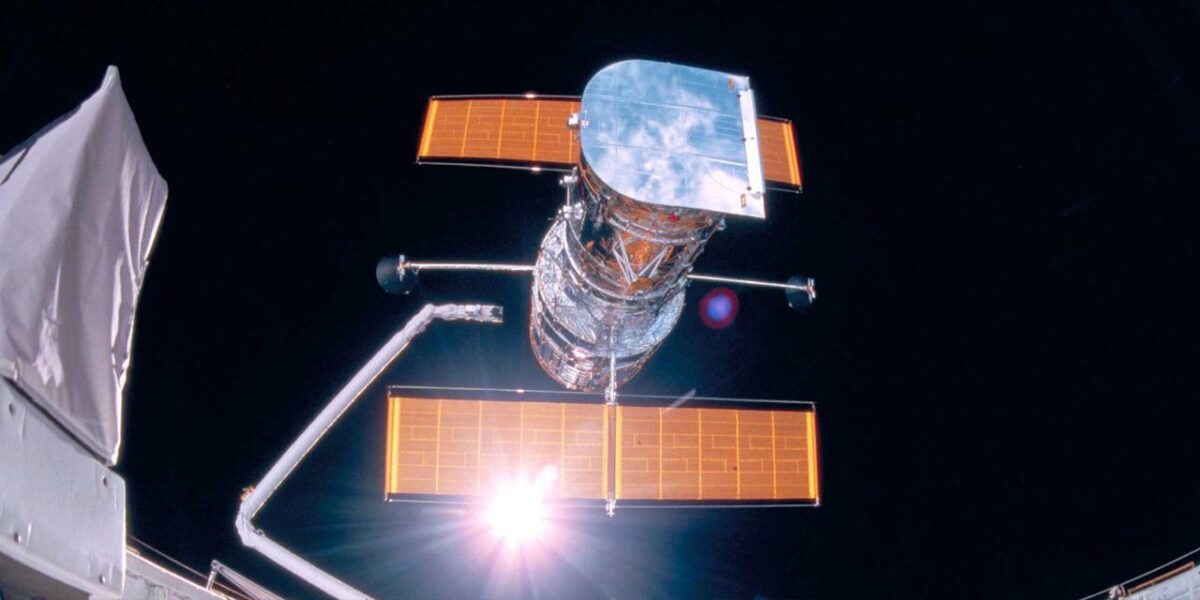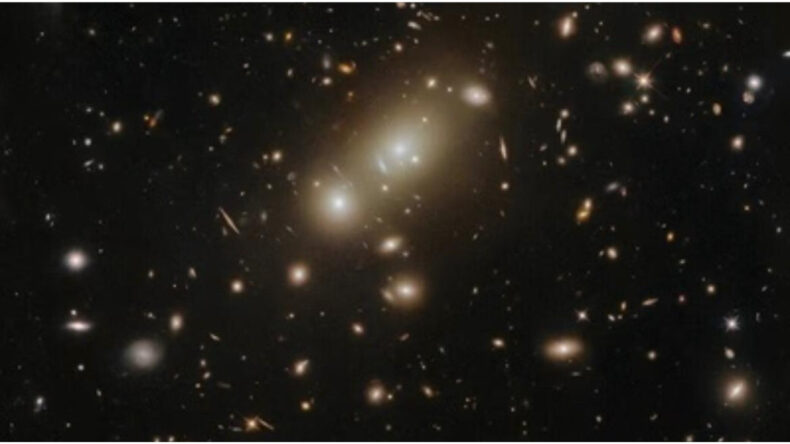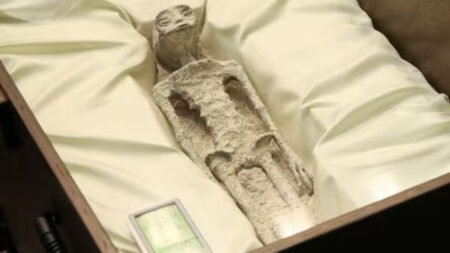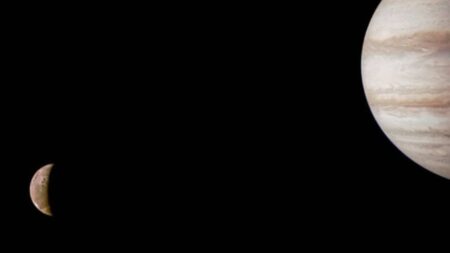An Astounding image of a cosmic leviathan was captured by NASA’s Hubble Space Telescope. This is ‘Abell 3322’ galaxy cluster, 2.6 billion light years away from Earth and it is located in the constellation known as Pictor.
The Hubble Telescope was also able to feature ‘2MASX J05101744-4519179’ which is the cosmic cluster around the leviathan itself. This fascinating image also depicts the mesmerizing stars from so far away and the immense light each of the stars projects into the universe.
The Leviathan’s Prowess
The qualities of this leviathan is that it generates enormous, x-ray wavelengths which are visible to the naked eye. But the Hubble telescope goes beyond the human side and Diggs out the exact nature and power of these wavelengths.
Like the legend of the leviathan, a mythical, enormous sea creature, which rises from the darkness of the ocean. A cosmic leviathan refers to the enormous cluster of galaxies, deep within our own universe. The cluster is so huge that it distorts space-time and the very fabric of the universe.
It also bends the light which makes the adjusting galaxies around it appear distorted or dimmer in comparison .
How did NASA capture the image?
NASA has stated that studying these kinds of galaxies helps us understand the luminous and the dark matter of the universe and moreover about how the universe came to be from a singularity.
This image was captured with the help of two major elements of the Hubble space telescope, one called “Wide Field Camera 3” and the other “ Advanced Camera for Surveys”. Both of these cameras have the capability to unravel the mysteries of the universe, which cannot be seen by the naked eye. The WFC3 covers the infrared, visible light and the ultraviolet light, whereas the ACS focuses more on the visible light, which is not covered by the WFC3 wide capability.
These two cameras have the ability to view astronomical objects of an immeasurable size in just a small electromagnetic film using the filters in it. These filters allow the scientist to see the object in specific wavelengths and the combination of all of these pictures at different wavelengths helps the scientists to understand the structure, size and behaviour of the object itself.

The brilliance of the ‘Hubble Telescope’
The Hubble space telescope is a project of international cooperation between NASA and ESA. The scientific operations of the telescope itself are carried out in Baltimore, Maryland in AURA’s Space Telescope Science Institute.
Moreover, this is not the first time the Hubble space telescope has captured beautiful images of our universe such as the Primordial dwarf galaxies. Ever since its launch in 1990 by NASA, it has helped us to see far beyond any human can possibly will.
In the late 1990s, the images sent by the Hubble telescope of supernovas helped the scientists to understand about the acceleration of the universe, and that it is expanding every single second. It has also helped us to understand how the very essence of the universe has been distributed ever since the Big Bang.
This image is an addition in the vital boon in the astronomical knowledge of the universe and the study of leviathan will help us gain a better understanding and appreciation of the mathematics of our universe.













